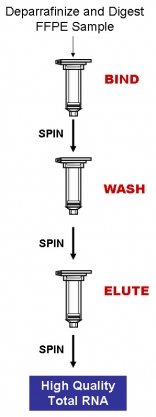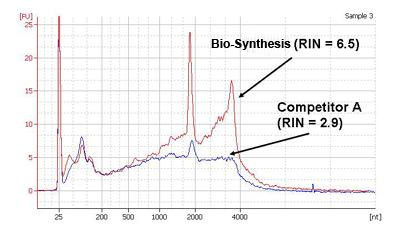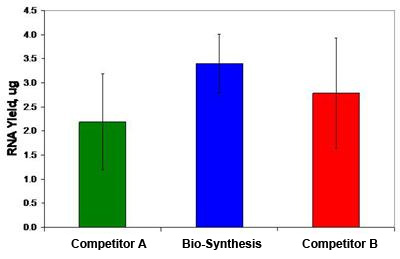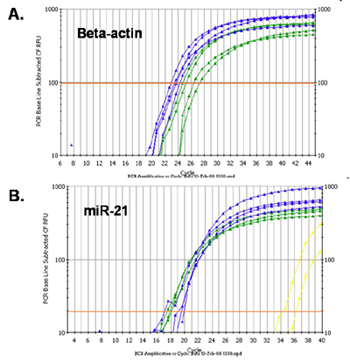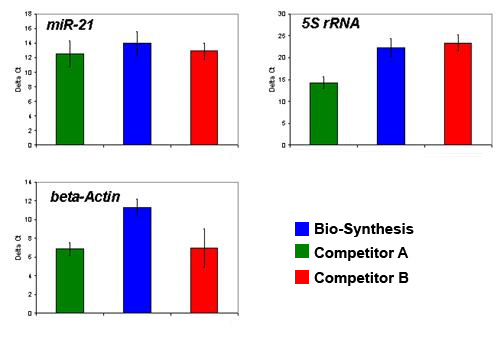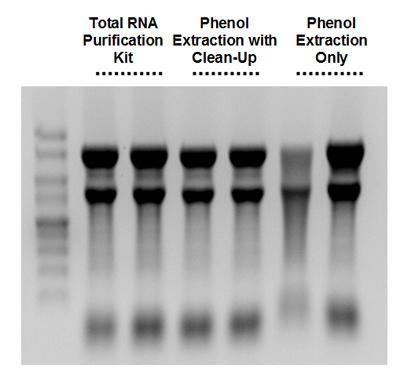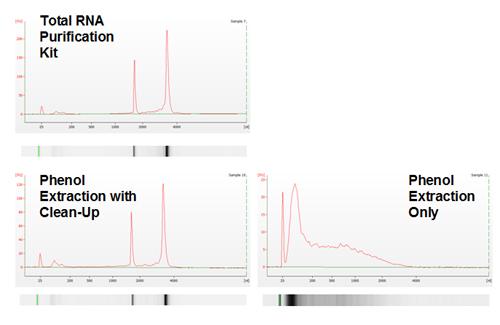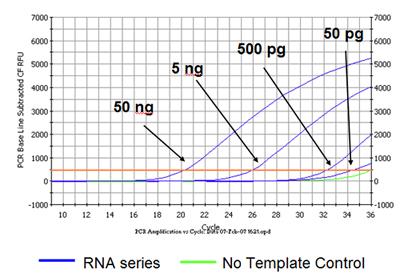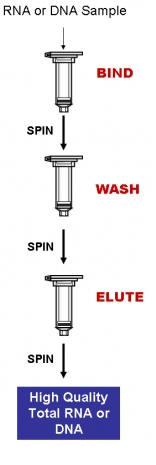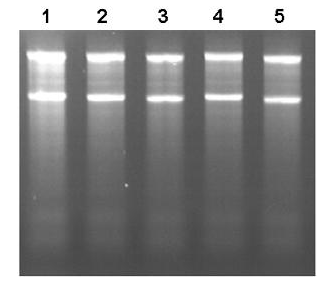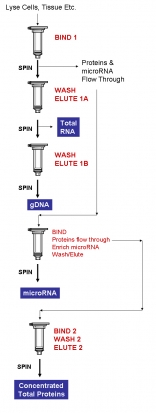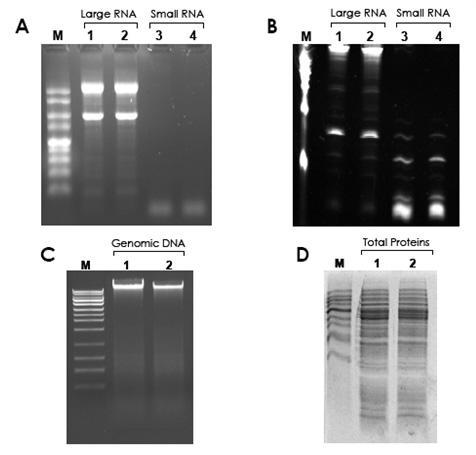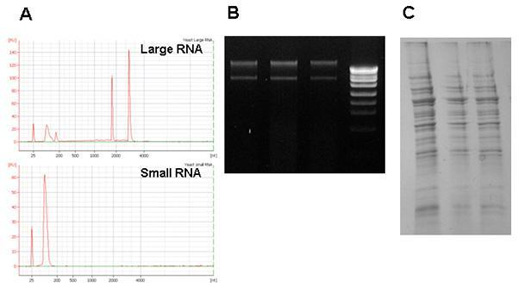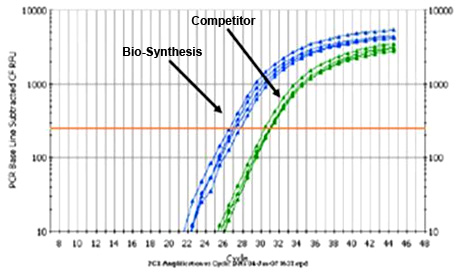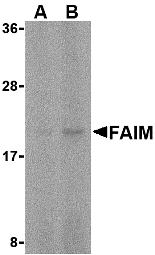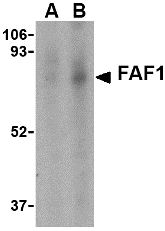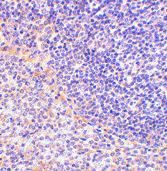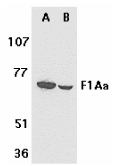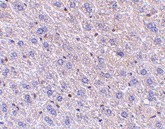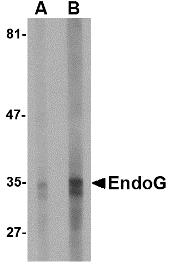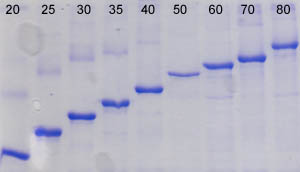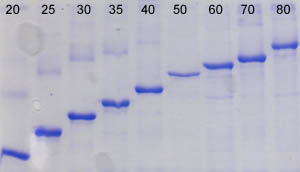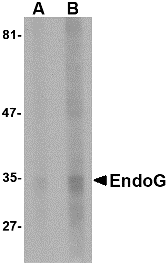Catalog# : NB-25000
Price/Unit : $295.00
Unit : 50 preps
For the rapid isolation and purification of total RNA (including microRNA) and genomic DNA from FFPE tissue samples.
* Purify all sizes of RNA, from large mRNA and ribosomal RNA down to microRNA (miRNA) and small interfering RNA (siRNA)
* Preferential purification of RNA from other cellular components without the use of phenol or chloroform
* Purified RNA and genomic DNA are of the highest quality for use in numerous downstream applications
* Available in 96 well format
Bio-Synthesis's FFPE RNA/DNA Purification Kit provides a rapid method for the isolation and purification of total RNA (including microRNA) and genomic DNA from formalin-fixed paraffin-embedded (FFPE) tissue samples. Alternatively, the kit can be used to isolate total RNA alone or genomic DNA alone from FFPE tissue samples through varying the protease digestion time and performing optional RNase or DNAse digestions.
Using formalin to fix tissues leads to crosslinking of the nucleic acids and proteins, and the process of embedding the tissue samples can also lead to fragmentation of the nucleic acids over time. Bio-Synthesis's FFPE RNA/DNA Purification Kit provides conditions that allow for the partial reversing of the formalin modifications, resulting in a high quality and yield of nucleic acids.
Purification is based on spin column chromatography using Bio-Synthesis's proprietary resin as the separation matrix. The process first involves deparaffinization of the FFPE samples through a series of xylene and ethanol washes. Next, the FFPE samples are digested with the provided Proteinase K and Digestion Buffer. Binding Solution and ethanol are then added to the lysate, and the solution is loaded onto a spin-column (BIND). Under these conditions only the RNA and/or DNA will bind while most of the contaminants will be removed in the flowthrough. At this point, any traces of genomic DNA can be digested allowing for pure RNA samples to be isolated. Alternatively, traces of the RNA may be digested at this point if a pure sample of genomic DNA is required instead. The bound nucleic acid is then washed (WASH) in order to remove any impurities. Lastly, the purified total nucleic acd is eluted in 50 µL of the provided Elution Buffer or water (ELUTE). Please see the procedure flowchart to the right.
This kit is also available in a 96-well format for high-throughput FFPE RNA/DNA purification. Purifictaion with the 96-well plate can be performed using either a vacuum manifold or centrifugation.
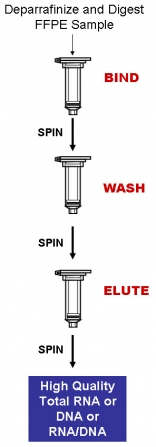 FEATURES AND BENEFITS
FEATURES AND BENEFITS* High quality and integrity of the isolated nucleic acid - Both the purified total RNA and/or genomic DNA are of the highest quality and integrity, and can be used in any sensitive downstream application.
* Isolate a diversity of RNA species - All RNA species can be isolated, from large mRNA and ribosomal RNA down to microRNA and siRNA.
* High yields - Bio-Synthesis's FFPE RNA/DNA Purification Kit allows for the purification of high yields of total RNA or DNA.
* Rapid procedure - Isolate total RNA and/or genomic DNA from FFPE tissue sections using a rapid spin column format or a high-throughput 96-well plate format.
* Versatile procedure - The kit allows for the purification of either pure total RNA, pure genomic DNA or both RNA and genomic DNA through the use of tailored protease digestion times.
APPLICATIONS
The purified RNA and genomic DNA are of the highest available quality from FFPE samples, and can be used in a number of downstream applications including:
* qPCR
* qRT-PCR
* Reverse transcription PCR
* Primer extension
* Mutation screening
* Expression array assays
* Microarray analyses
* Sequencing
* Southern blotting
* SNP analysis
* Next Generation Sequencing
 Figure 1. High Quality and Yield of Total RNA. Total RNA was isolated from one slice of hamster FFPE kidney section (20 micron thickness) using Bio-Synthesis's FFPE RNA/DNA Purification Kit and a leading competitor’s kit. One microliter of the 50 µL purified RNA was then resolved on an Agilent 2100 BioAnalzyer using an RNA Nano 6000 chip. As it can be seen, Bio-Synthesis's not only isolated higher yields of total RNA, but the RNA was also of a higher quality as evidenced by the higher RIN values obtained with Bio-Synthesis's RNA.
Figure 1. High Quality and Yield of Total RNA. Total RNA was isolated from one slice of hamster FFPE kidney section (20 micron thickness) using Bio-Synthesis's FFPE RNA/DNA Purification Kit and a leading competitor’s kit. One microliter of the 50 µL purified RNA was then resolved on an Agilent 2100 BioAnalzyer using an RNA Nano 6000 chip. As it can be seen, Bio-Synthesis's not only isolated higher yields of total RNA, but the RNA was also of a higher quality as evidenced by the higher RIN values obtained with Bio-Synthesis's RNA.FFPE RNA/DNA Purification Kit Contents
1. Digestion Buffer
2. Binding Solution
3. Enzyme Incubation Buffer
4. Wash Solution
5. Elution Buffer
6. Proteinase K
7. Spin Columns
8. Collection Tubes
9. Elution Tubes
10. Product Insert
Long-Term Storage : All solutions should be kept tightly sealed and stored at room temperature. The Proteinase K should be stored in aliquots at -20°C upon reconstitution. These reagents should remain stable for at least 1 year in their unopened containers.
Product Usage
For laboratory research use only, not for diagnostic use! Not for use in humans.

